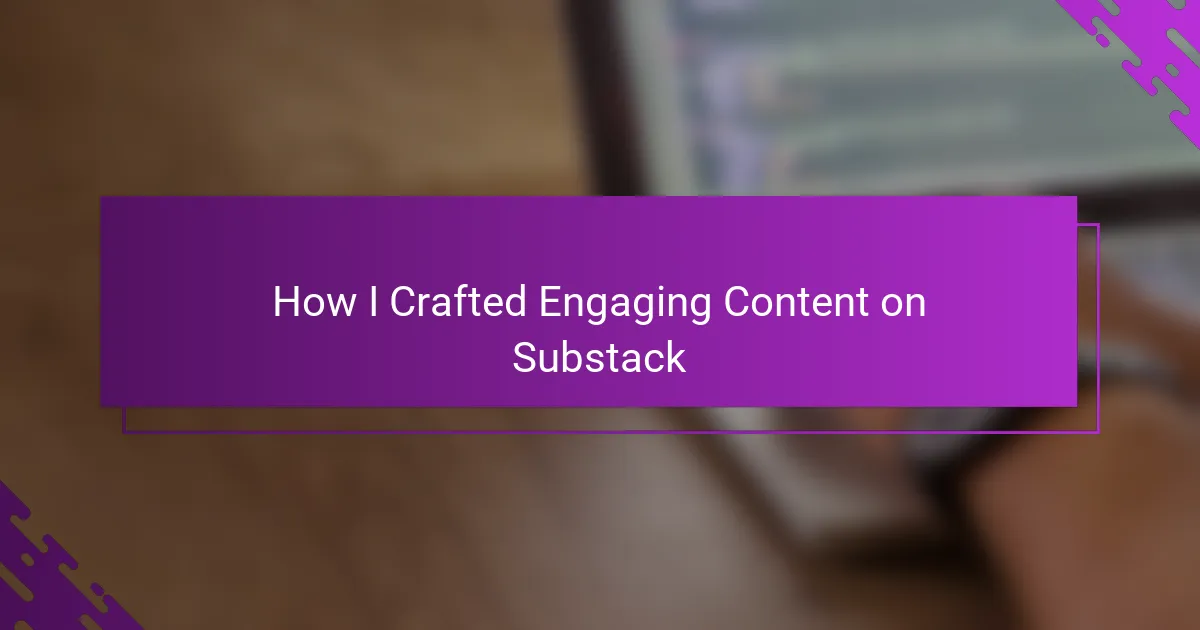Key takeaways
- Personal blogging is an authentic way to share thoughts and experiences, fostering meaningful connections with readers.
- Substack offers a simple platform for blogging and monetization, allowing writers to focus on creativity and engage directly with their audience.
- Building engagement involves understanding readers, inviting interaction, and maintaining a balance between consistency and spontaneity in content creation.
- Monetization can enhance creativity, as offering diverse content tiers helps cultivate a supportive community without compromising authenticity.
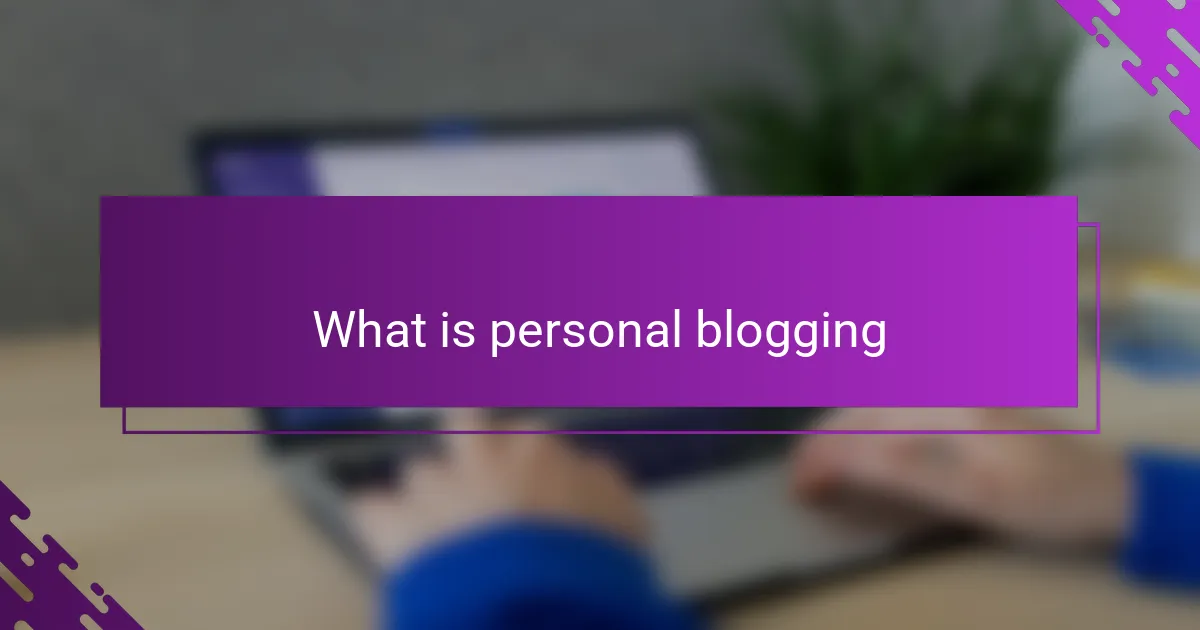
What is personal blogging
Personal blogging, to me, is like having a private corner of the internet where I can share my thoughts, experiences, and passions without filters. It’s more than just writing; it’s a way to connect with others through honesty and vulnerability. Have you ever found yourself reflecting on a moment and just wanting to put those feelings into words? That’s exactly what personal blogging captures.
When I started my own blog, it felt both exciting and a bit intimidating. The beauty of personal blogging is that it doesn’t require perfection—just authenticity. It’s a space where your unique voice matters more than polished prose or viral trends.
What strikes me most about personal blogging is how it evolves alongside its writer. Over time, your blog becomes a map of your growth, struggles, and joys—a digital journal that invites readers to travel with you. Isn’t it amazing how sharing your story can create unexpected connections?
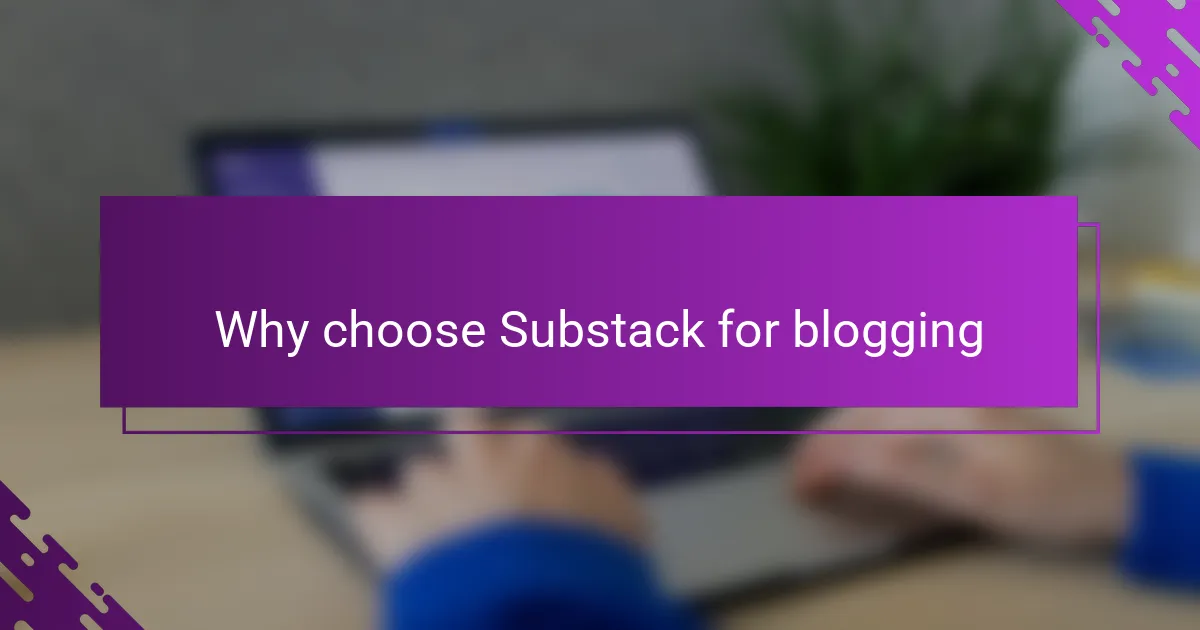
Why choose Substack for blogging
Choosing Substack for blogging felt natural to me because it blends simplicity with power. There’s no fussing over complicated setups or endless design choices—I just focus on writing and connecting. Have you ever wished your platform just worked for you, rather than you working for it? That’s exactly what Substack provides.
What I appreciate most is how Substack handles newsletters and blogs together. It’s like having a direct line to your readers’ inboxes, which makes engagement feel personal and immediate. When someone responds or subscribes, it’s not just a number—it’s a real interaction, and that has changed how I see my writing’s impact.
Plus, the built-in monetization options gave me confidence to keep creating consistently. Knowing I can grow both audience and income without jumping through hoops made the whole process less stressful. Have you ever hesitated to share your work because of the uncertainty around making it sustainable? Substack helped me overcome that fear.

Planning content for engagement
Planning content for engagement starts with understanding who I’m really writing for. Early on, I made a habit of thinking about my readers’ interests and pain points before typing a single word. Have you ever wondered what your audience truly cares about? That curiosity shaped my content into something readers found relatable, turning casual visits into meaningful conversations.
I also learned to balance consistency with flexibility. Setting a rough content calendar helped me stay on track, yet I remained open to spontaneous ideas that felt authentic in the moment. Isn’t it freeing to create without rigid confines, allowing your creativity to guide you? This approach kept my writing fresh and my readers coming back.
Most importantly, I planned engagement by inviting interaction—asking questions, encouraging replies, and sometimes sharing behind-the-scenes thoughts. I found this openness built trust, making readers feel like they were part of the journey rather than just observers. What’s been your experience when a blogger speaks directly to you? That personal touch makes all the difference.
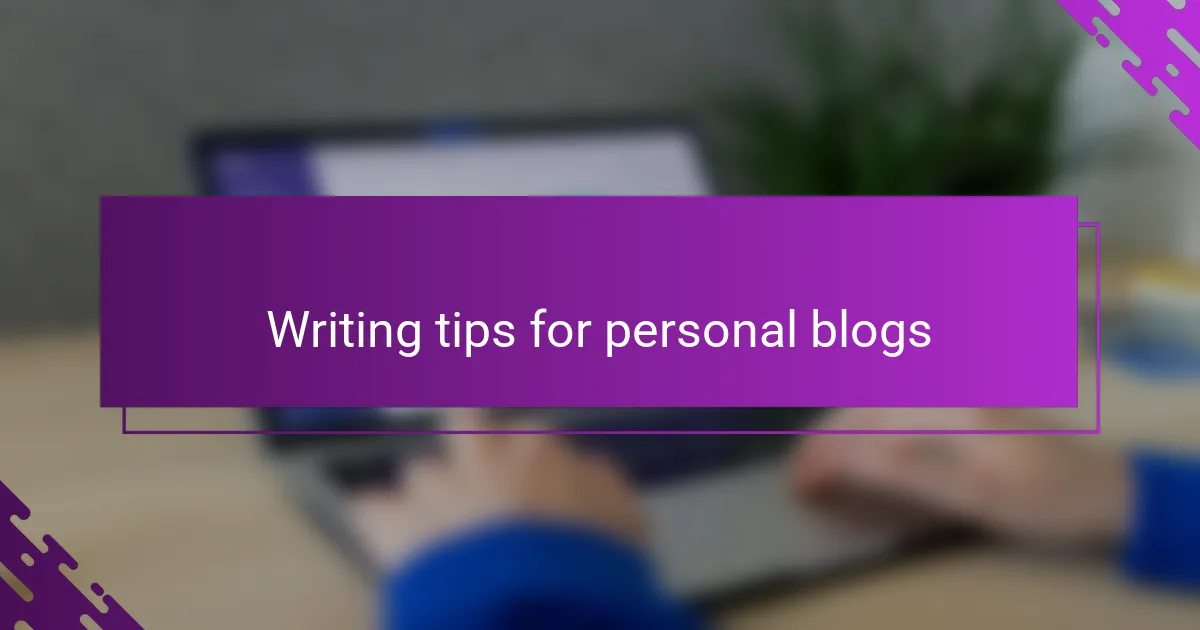
Writing tips for personal blogs
One writing tip that really transformed my blogging was embracing imperfection. Early on, I often worried about getting every sentence exactly right. But over time, I realized that letting my personality shine through—even if the prose wasn’t flawless—made my posts feel more genuine and relatable. Have you noticed how the quirks in someone’s writing can actually draw you in?
Another strategy I rely on is writing as if I’m talking to a close friend. This mindset helps me keep the tone warm and conversational, which I believe invites readers to stick around and engage. When I frame my thoughts this way, the words flow easier, and the writing feels less like a chore and more like sharing a story over coffee.
Lastly, I find it crucial to pause and reflect before hitting publish. Sometimes, stepping away from the draft for a day helps me see if what I wrote truly captures my thoughts and emotions. Have you ever revisited something you wrote and felt a stronger connection or clarity? That moment of clarity often makes all the difference in creating content that resonates.
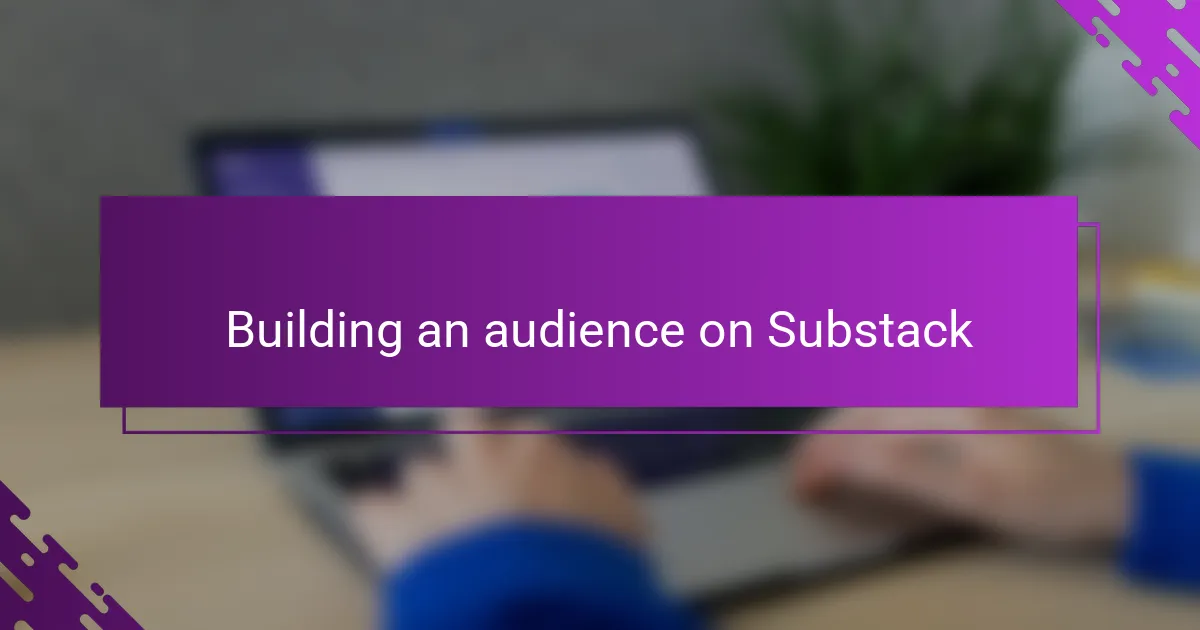
Building an audience on Substack
Building an audience on Substack felt like cultivating a garden where every new subscriber was a seed with potential. I noticed that consistency played a huge role—regular emails created a rhythm my readers came to expect. Have you ever felt that satisfaction when someone replies to your newsletter? Those moments made me realize my words were landing somewhere meaningful.
I also found that being transparent about my journey and even my struggles invited readers to connect on a deeper level. When I shared personal stories or asked for feedback, the engagement naturally grew. Isn’t it interesting how vulnerability can turn strangers into a community?
Lastly, promoting my Substack beyond the platform itself became crucial. I started sharing links on social media and in relevant forums, but I was careful not to spam—I preferred thoughtful introductions that sparked curiosity. To me, building an audience wasn’t just about numbers, but about finding people who genuinely cared to be part of the conversation.
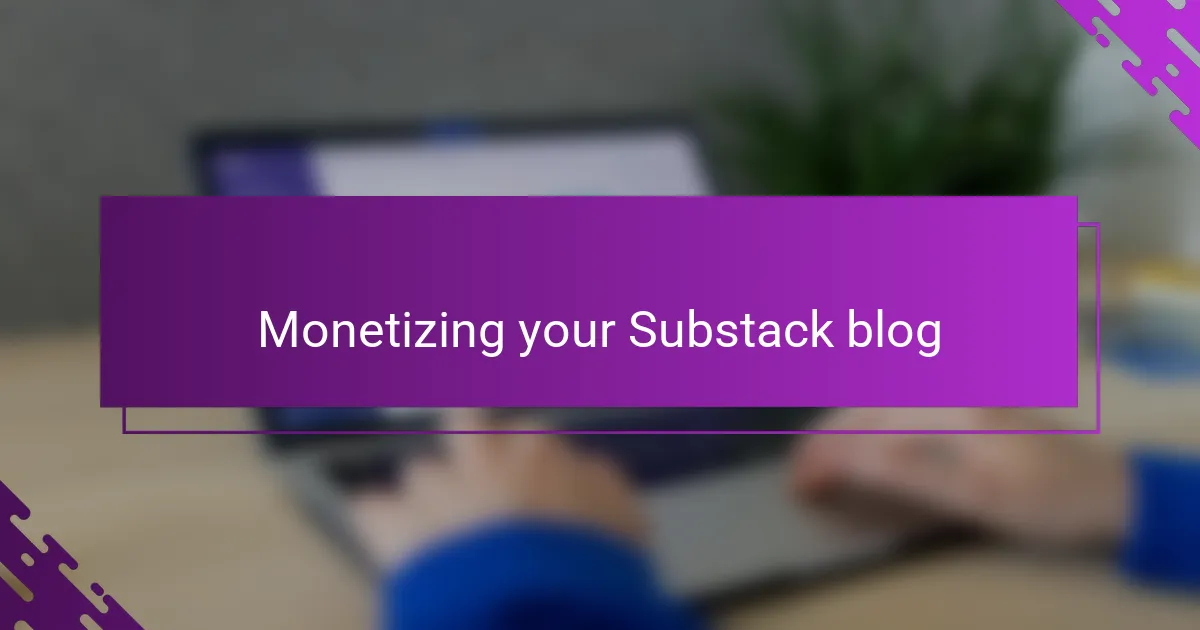
Monetizing your Substack blog
Monetizing my Substack blog felt less like a business hurdle and more like an invitation to deepen my relationship with readers. I discovered that offering a mix of free and subscriber-only content created a sense of exclusivity without alienating my community. Have you ever hesitated to put your work behind a paywall? I found that transparency about why I was charging helped readers understand and support my efforts.
Setting subscription tiers was another game-changer. By tailoring different levels of access and perks, I could meet diverse interests and budgets without feeling like I was selling out. It was rewarding to see readers choose what felt right for them, turning casual interest into meaningful support. How often do you get to offer such personalized experiences in blogging?
What truly surprised me was how monetization didn’t stifle creativity; it actually inspired me to deliver more thoughtful, valuable content. Knowing that my work had both emotional and financial worth made writing feel more purposeful. Have you ever noticed how a little encouragement can spark your best ideas? That’s exactly how paid subscriptions worked for me on Substack.
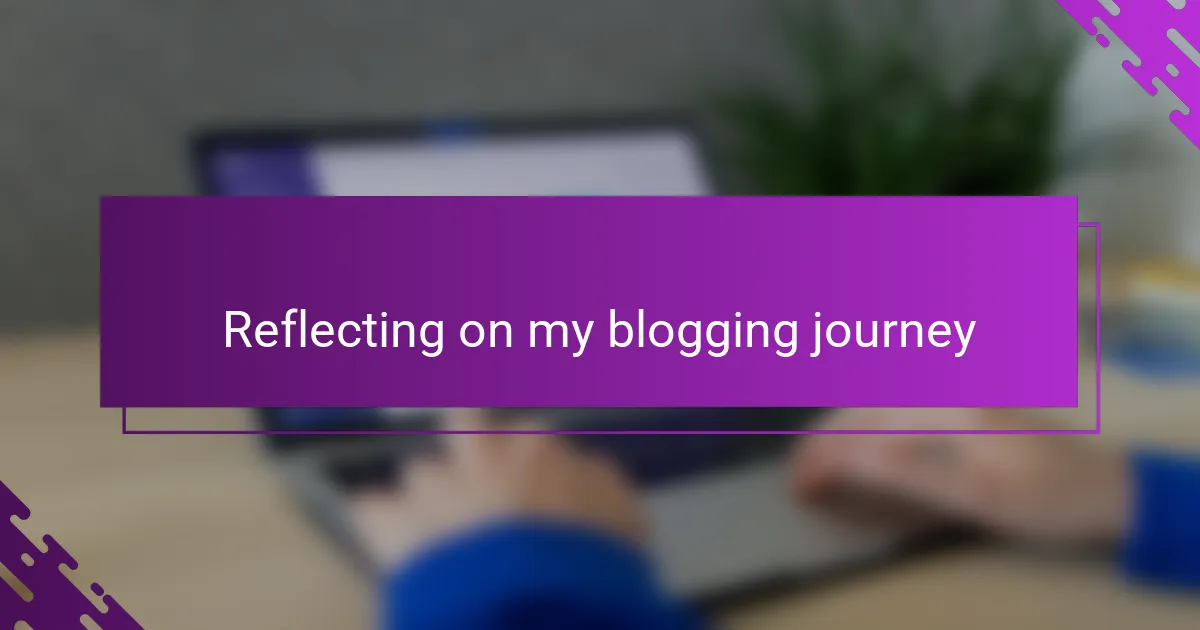
Reflecting on my blogging journey
Looking back on my blogging journey, I’m struck by how much I’ve evolved not just as a writer, but as a person. There were moments of doubt when I wondered if anyone would read my words, yet each small interaction reminded me that real connection was possible. Have you ever been surprised by how sharing something personal creates unexpected bonds? That was a powerful lesson for me.
Every post I crafted became a snapshot of where I was at that moment—sometimes excited, other times uncertain, but always genuine. Reflecting now, I realize how much vulnerability fueled my growth. It wasn’t just about building an audience; it was about understanding myself better through the act of writing.
I also remember the times when I hesitated, fearing my content wasn’t good enough or interesting. But looking back, those fears were part of the process, not roadblocks. How often do we let self-doubt hold us back, only to find that pushing through leads to richer experiences? That insight changed how I approach blogging and creativity in general.
